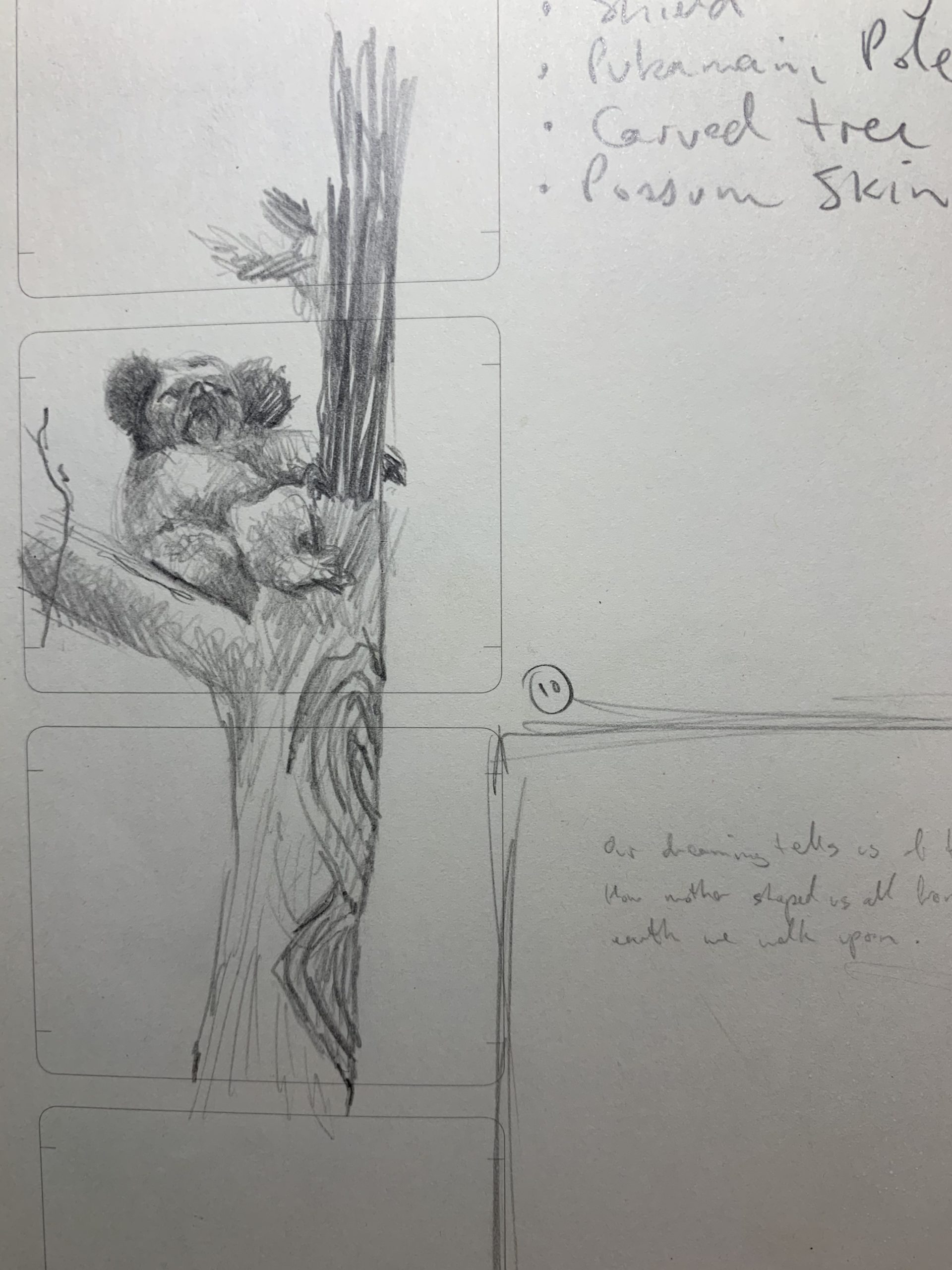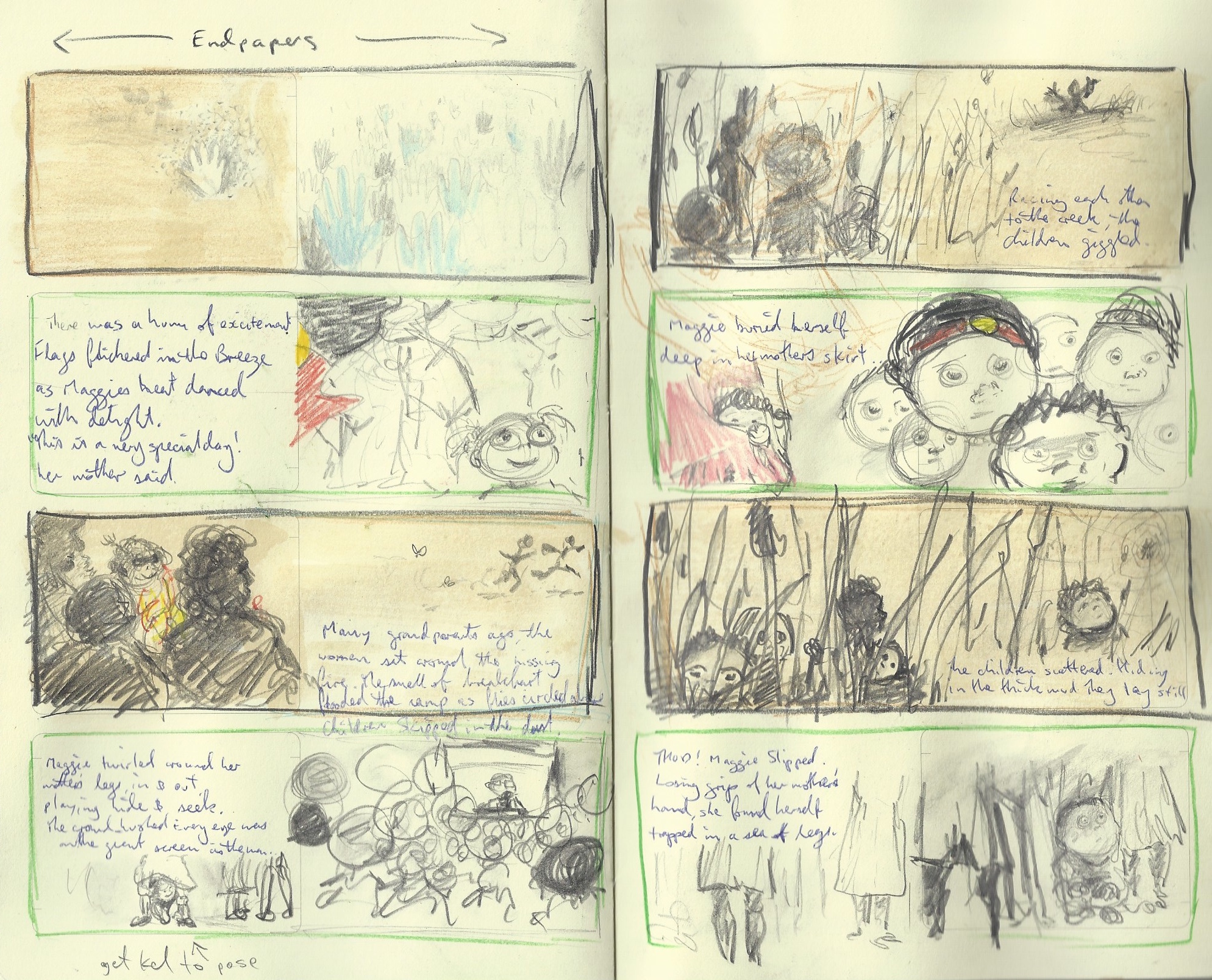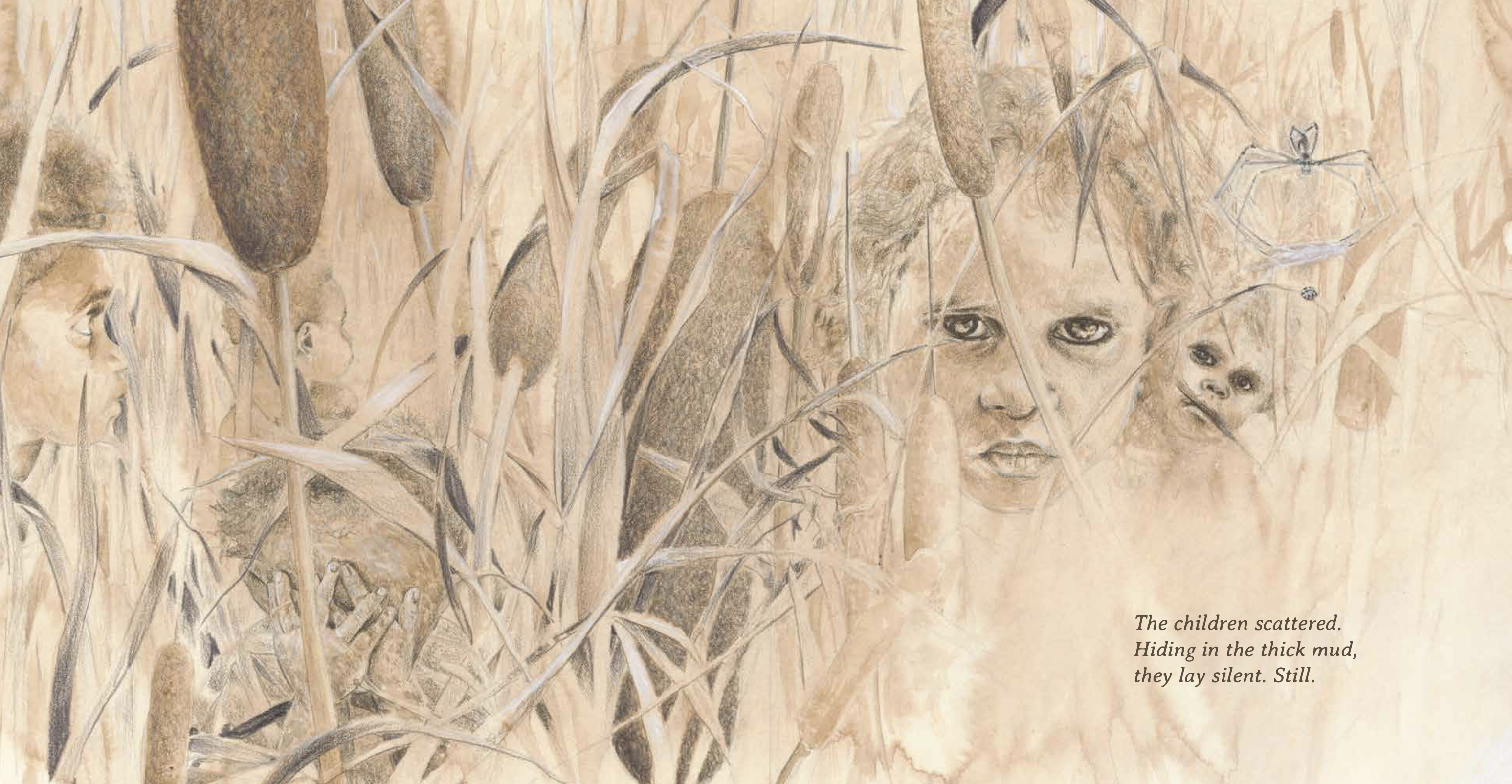If you’ve ever wondered what goes into the illustration process of a picture book, this is the post for you. Illustrator Dub Leffler is a descendant of the Bigambul people of South West Queensland and one of Australia’s most sought after children’s book illustrators. He has created 23 books and I’ve been fortunate enough to edit two of them — Sorry Day by Coral Vass (2018) and Strangers on Country by Kirsty Murray and Dave Hartley (out April 2020).
In this interview he takes us behind the scenes on his creative process and gives us an insight into the publishing process, which is particularly invaluable for emerging picture book creators wanting to understand the nuts and bolts of it. I didn’t manage to get him to dish the dirt on working with the illusive Banksy (damn it) but he explains how new books have come to him through psychics and werewolves, how coffee and salt can be a medium for illustration, and what makes him want to illustrate an author’s manuscript.
Irma Gold: You are one of 13 kids, what was life like growing up? And did you spend a lot of time drawing?
Dub Leffler: Yes, it is a big family, however I didn’t grow up with my family due to being adopted at birth. Growing up in my adoptive family — who had five boys including myself — I always had time for drawing and did so quite frequently. I remember drawing a lot — before and after school, usually using spare pages in my school exercise books. I even made my own picture books using spare paper and dodgy staples.

IG: What led you to illustrating children’s picture books?
DL: My mother went to a psychic and the psychic told her, ‘Your son, is going to write a book and he will travel overseas.’ A few months later, I moved back to Sydney and the following morning a lady came to the house I was renting to speak with my flatmate about working on children’s books. So it literally came to my doorstep. And the rest, as they say, is history.
IG: What does a typical day or week look like for you?
DL: A typical day for me is — drop daughter off at school, take dog for a jog and then work until 12 pm. Coffee break and then work again until about 2 pm. I often work late into the night/early morning too, because it is the quietest time. Going to bed between 1 am and 2 am is not uncommon.
For each book, most of the time working on them comes down to research. I create a huge folder of images for inspiration for each story, as well as creating a soundtrack for each book so I have something to listen to while I work. I create my own mini deadlines for each book — finish the storyboard by this date, and so on. Being an illustrator, you work unconventional hours and often weekends.
IG: You have written and illustrated your own book, Once There Was a Boy, but you have also illustrated other authors’ stories. What is it about a manuscript that makes you want to take it on?
DL: If I connect with the story in some way, I usually illustrate it. It makes no difference to me if the author is established or being published for the first time. If the story is good and I can already see images in my head just from reading the text, then I usually say ‘yes’ to illustrating it.

IG: You have collaborated with internationally recognised illustrators like Shaun Tan, Colin Thompson and Banksy. Tell us more!
DL: Years ago, when I had illustrated only a handful of books, I met Colin Thompson at my wife’s cousin’s birthday party. The theme was fur and I went dressed as a werewolf. I had a very interesting conversation with Colin Thompson in the middle of a dance floor surrounded by people dressed in fur. Quite surreal. Colin ended up asking me to collaborate on a book with him. That book also contained work by Quentin Blake, Freya Blackwood, Shaun Tan and Sarah Davis. It was called The Bicycle Book and came out the same time at Once There Was a Boy, in 2011.
As for Banksy, I can’t talk about Banksy — circle of trust and all that.
IG: What mediums do you work in?
DL: I illustrate using an architect’s pencil for roughs, paint and draw with watercolours and use very, very expensive paper. Sometimes I use coffee, paint and salt on wet watercolour paper to build up texture on the paper and then draw back into it.
IG: What was the most challenging book that you’ve worked on, and why?
DL: Sorry Day was the most challenging story to illustrate due to the emotional content involved. Researching for Sorry Day was hard too — there is so much negativity out there in cyberspace in regards to Aboriginal people. I would often come across comments and replies to posts and videos filled with racism. And there was A LOT of it. This spurred me on to make Sorry Day the best damn book I could. It’s the most important book I have and possibly will ever illustrate.

IG: Out of all your books and illustrations, do you have a single favourite illustration?
DL: My favourite illustration would have to be in Sorry Day when the children are hiding in the creek among the bullrushes. You can hear the crinkle of the blades of grass and the children holding their breath. It has a quiet intensity.
 IG: Sorry Day uses a dual narrative, with one narrative strand set in the past when the children are being stolen, and another in the present at Kevin Rudd’s apology to the Stolen Generations. The two colour schemes that you use for the two threads cleverly demarcates them. How did you come up with this?
IG: Sorry Day uses a dual narrative, with one narrative strand set in the past when the children are being stolen, and another in the present at Kevin Rudd’s apology to the Stolen Generations. The two colour schemes that you use for the two threads cleverly demarcates them. How did you come up with this?
DL: I have an old photograph of my mother. It is a faded black and white photo that has yellowed with age. I knew that this is how the ‘past’ section of Sorry Day should look. I worked closely with Amy Cullen, the graphic designer, in deciding how to use sepia tones throughout the book — at one point both full colour and sepia were proposed to be on the same page. It’s a good example of showing two different times using just illustration.

IG: Tell me about Strangers on Country by Dave Hartley and Kirsty Murray. How did you go about bringing this real people to life?
DL: The short answer is — research. The longer answer is — after I had done enough research and have collated enough reference images to form a coherent idea, I made sure to illustrate each image as if they were a still from a film — as if they could move at any moment. I try to imbue all of my illustrations with some type of movement — even if it’s the suggestion of someone breathing, this approach can help your images come alive in the viewers’ mind.
IG: What is the best aspect of your job?
DL: Being able to work from anywhere and choose my work hours. It’s great being your own boss. Plus, you get to travel — whether it’s to a conference or a book festival. These things help your career and it’s great connecting with people doing the same job.
IG: What is the most challenging aspect of your job?
DL: Having to work long hours. Although it’s a pretty cool job — I get to draw pictures for a living!
IG: How long does it usually take you to illustrate a book?
DL: I have been known, from time to time, of going WAY past my deadlines — a lot of authors/illustrators do it. I actually had to push back Sorry Day a whole year because of the detail needed in the work. Plus the book was published on the 10th anniversary of when Kevin said ‘Sorry’. But usually I aim to finish one to two books a year.
IG: Can you take us through your illustrative process? How do you work with the publisher and author?
DL: It’s important to not only work with the publisher when illustrating a book, but also to work with the graphic designer if you can. They help hone your illustrations into something beautiful.
The process changes from publisher to publisher. Some are more hands on, some trust your judgment and let you do your thing. Sometimes you get notes suggesting what the illustrations should be. Sometimes you’re given free reign to interpret the text. Generally I work closely with both the publisher and graphic designer if I can, and make it a rule not to consort too closely with the authors. If you do work closely with an author, they have to realise that you have a job to do and that they (the author) are not the illustrator and should not tell you your job. In my experience, I unfortunately have had this happen. I have never come across an illustrator who told a writer how to write. You’re all working on the one book and it should be collaborative.
My personal process starts with small sketches of anything that comes to mind in regards to the story. I write notes on the story and underline key words in the text that should be illustrated. I read and re-read the story many times to make sure I illustrate true to the text. From there I begin storyboards. I have a special book just for storyboards and draw many different panels exploring things like colour, technique and composition. Along the way, I may do one or two concept illustrations — they are basically finished illustrations. They give me a good idea of what the tone of the book should be and how the finished artwork will look.
Throughout this process, there is a lot of correspondence between the publisher, graphic designer and myself and once we decide on a final storyboard, I begin the final art. This usually (but not always) is something I do quite quickly — I usually finish the final art in less than a month — but it’s the preparation I under take beforehand that takes a lot of time. The final art is basically the afterthought of all your prep.
Once I finish a piece of final art, I send photos of it to the publisher and graphic designer to make sure I haven’t missed anything, or if anything needs changing. I always draw final art to size — I mark the dimensions on the paper and am always aware of where the text will be on the page — you don’t want anything important in the illustration to be covered up with the story. It’s the illustrators job to support and enhance the story.
Once the final artwork is complete, a courier is organised and the artwork is picked up from my studio and six months or so later — BAM! You get a new book in the mail. And then the whole process starts again.


